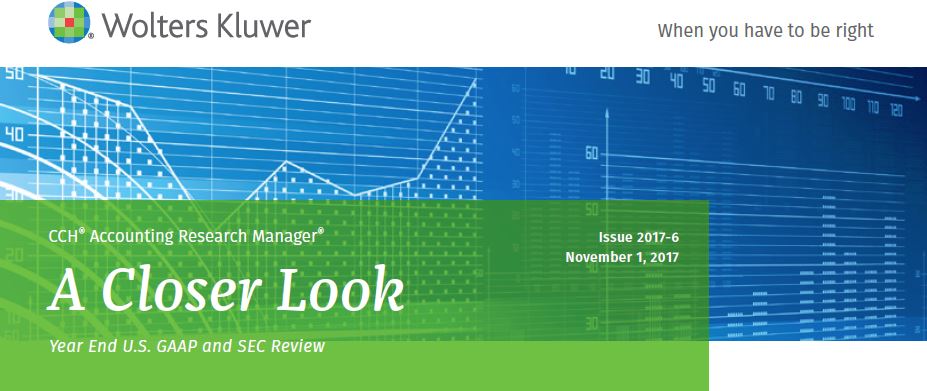
For a summary of the accounting rules released in 2017 and the most significant new rules from 2016, 2015, and 2014, check out A Closer Look: Discussion and Analysis of Current Accounting and Audit Issues.
CCH made this update available for free to people on their mailing list. I received permission from my editor at CCH to make it available on my blog.
Click here to download the 54 page newsletter. CCH does not have a separate landing page for the document, so that link automatically downloads the newsletter. UPDATE: If link didn’t work for you, please try again. I reloaded the link and it is working now.
For each of the accounting rules covered, the newsletter provides:













